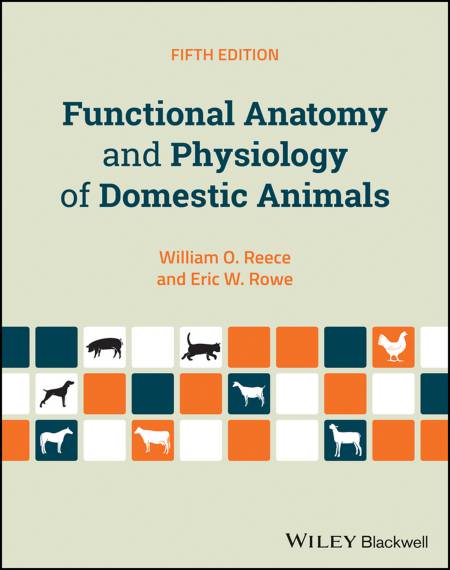Functional Anatomy and Physiology of Domestic Animals is directed toward undergraduate students seeking a basic understanding of domestic animal anatomy and physiology.
Functional Anatomy and Physiology of Domestic Animals

It assumes a basic background in biology and a strong interest by students wanting a greater understanding of animal systems. Now in its Fifth Edition, this text will continue to be of particular interest to students in animal science, pre-veterinary medicine, veterinary technician/technology programs, and other animal-related majors, and is an excellent bridge to other books required for greater depth of understanding. Experience with the first four editions and user comments have continued to guide efforts for this revision.
Functional anatomy refers to the concurrent presentation of anatomy (both microscopic and gross) with physiology to achieve a better appreciation of their interconnection. Titled Physiology of Domestic Animals in its First and Second Editions, it was renamed with the Third Edition in order to provide users greater recognition of its anatomy content. The first chapter, Basics of Structure and Function, includes topics on cell structures and functions, energy production, functions of DNA and RNA, embryology, tissues, directional terms and planes, and body cavities. Knowledge of these topics will be useful when encountering the chapters that follow.
KEY FEATURES
In addition to chapter titles, the primary headings for each chapter are included. Perusal of the Contents provides visibility for the focus of each chapter and the depth of its coverage.
A further review of the content is provided at the beginning of each chapter in the form of an outline of primary and secondary headings. The headings are organized within a chapter with their respective text, in an orderly manner from the beginning to its end with a greater depth noted by the secondary headings. Tertiary headings may follow secondary headings in some locations.
These multiple-answer exercises are designed to promote teaching effectiveness and are placed at the end of each chapter. The questions are intended to reinforce meaningful chapter content and to provide a thoughtful review. The correct answers are given in Appendix B.
At many locations throughout the chapters, anatomical or physiological topics are extended with a brief mention of a clinical correlation. These are provided, not only because of their interest, but also because of their relevance to the topic being presented.
Password: pdflibrary.net
